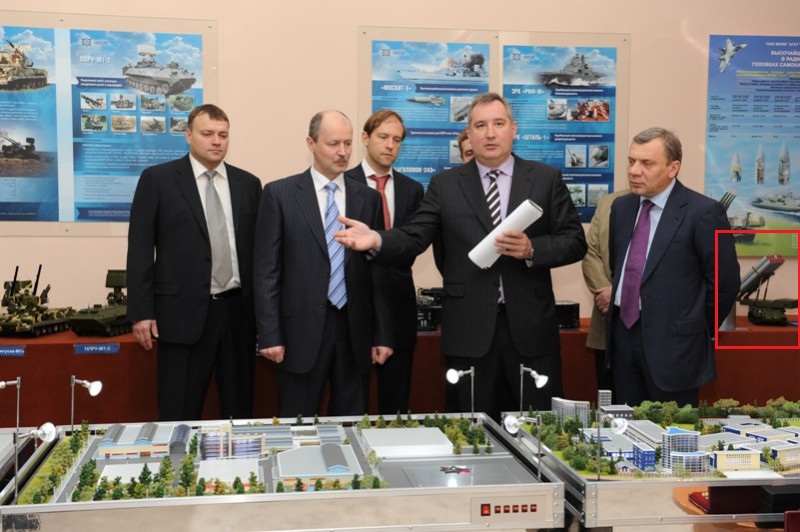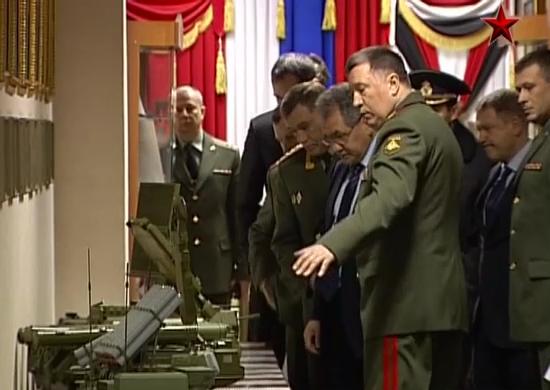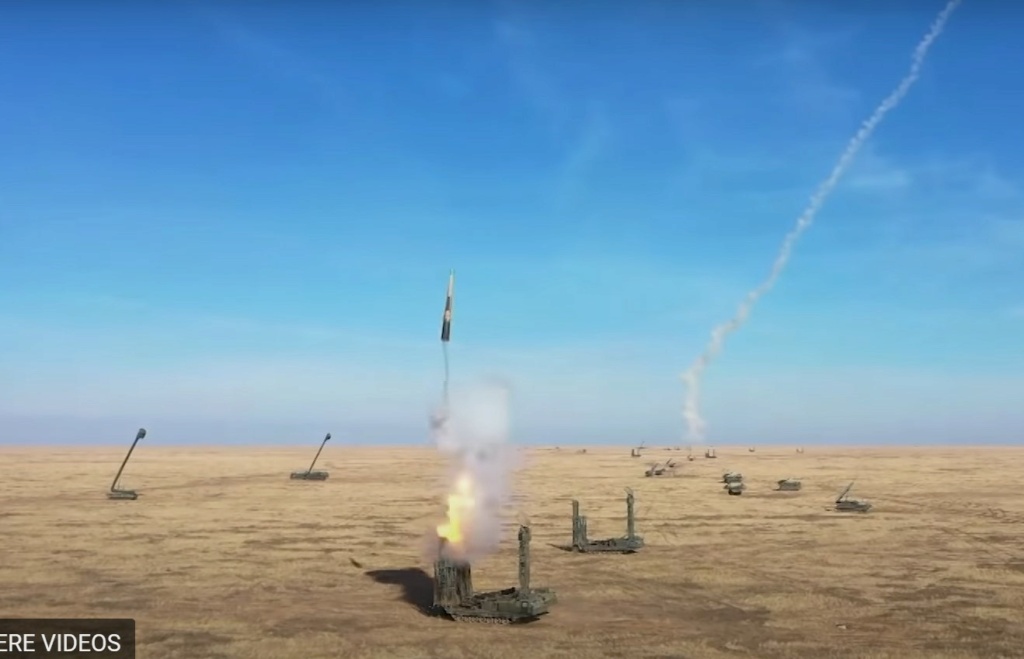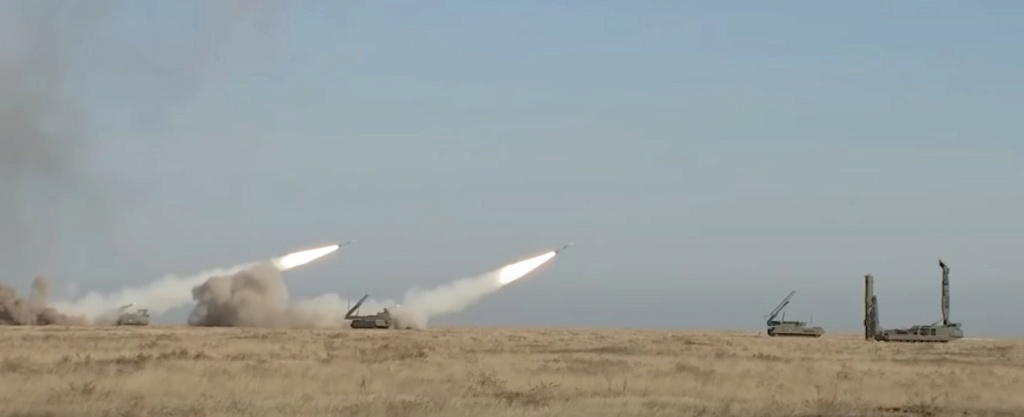GarryB can you please provide that link on wich was explained structure of airdefense brigade/batery/tank brigade you had it all pretty nice summed up.
In the current brigade structure:
An independent Motor Rifle Brigade would have in terms of air defence...
Air defence missile battalion
- HQ
- 3 x Heavy AD Batteries: 4 x SA-8 or 4 x SA-15 or 2 SA-11
Air defence missile - artillery battalion
- HQ
- 1 x SP AD Gun Battery: 6 x ZSU-23-4 or 2S6
- 1 x AD Battery: 6 x SA-13
- 1 x AD Battery: 27 x SA-14
the full document:
New Russian Brigade TO&E
.
Russia is re-organizing its ground forces to a new, brigade-based structure. That's a move that the German army did in the late 50's and it became the model for many NATO allies during the 60's and 70's (we kept the division HQs as a fig leaf for political reasons mostly).
The advantage of a brigade-centric structure is the supposedly optimal combination of combat power and agility on the battlefield. The greater (x3) quantity of brigades in comparison to divisions also reduces the widths and areas to be covered by their staffs.
Russian army units are traditionally smaller than Western counterparts (a Soviet WW2 Corps was about as large as a German WW2 division if both were at target strength). That reduced the need for a step towards smaller, more agile units (the orthodox way of covering a large war zone with a smaller army than known from both world wars).
I heard about their army reform efforts years ago and understood it to be mostly about reform of the "hidden" values (less overhead, better training, better morale and the like), and for less mobbing, but it involves also said brigade structure.
This is one of the versions about their new standard combat brigade structure. They don't seem to have settled on one specific design and there's some uncertainty around the issue. Here's no room for multiple TO&Es, so let's focus on this version and keep in mind that this TO&E is preliminary and unreliable info.
Russian Independent Motor Rifle Brigade
(about 4,500 personnel)
Command Company
Signal Battalion
- HQ
- 2 x Signal Companies
1x or 2x Tank Battalion(s) (usually 1)
- HQ: 1 x MBT
- 4 x Tank Companies with each 10 x T72/T-80/T-90
3 x Motor Rifle Battalions
- HQ
- 3 x Motor Rifle Companies: 10 x BMP or BTR or MT-LB
- Mortar Company: 6 x 120mm Mortars 2B11/2S12 or 6 x 82mm Mortars 2B14
- AGL platoon: 3 x BMP or BTR, 6 x AGS-30 AGL
- Antitank platoon: 3 x BMP or BTR, 6 x AT4/AT13/AT14
- Recon platoon: 1 x BMR-K, 2 BMP or 3 x BTR
- Engineer platoon
- Logistic platoon
- Medical platoon
Artillery Command and recon battery
2 x SP howitzer battalions
- HQ
- 3 x SP Howitzer Batteries: 6 x 2S3M or 2S19 152mm SP Howitzers or 6 x 2S1 122mm Howitzers
Rocket launcher battalion
- HQ
- 3 x MLRS Batteries: 6 x BM21
Antitank Battalion
- HQ
- 1-2 AT Gun Batteries: 6 x 100mm MT-12 AT-Gun, should be replaced with 6 x 2S25 Sprut
- 1-2 ATGM Batteries: 9-12 x 9P148 (AT-5) or 9-12 x 9P149 (AT-6), should be replaced with 12 x 9P162 (BMP3 with AT-14 Kornet)
Air defence missile battalion
- HQ
- 3 x Heavy AD Batteries: 4 x SA-8 or 4 x SA-15 or 2 SA-11
Air defence missile - artillery battalion
- HQ
- 1 x SP AD Gun Battery: 6 x ZSU-23-4 or 2S6
- 1 x AD Battery: 6 x SA-13
- 1 x AD Battery: 27 x SA-14
Recon Company: 4 x BMR-K, 6 x BMP oder 10 x BTR
NBC Defence Company
Engineer Battalion
- HQ
- Engineer sapper company
- Engineer construction company
- Engineer technical company
- Pontoon bridge company
Maintenance battalion
- HQ
- Tracked Vehicle Maintenance Company
- Tracked Vehicle Maintenance Company
- Ordnance/Weapons Maintenance Company
- Electronic Maintenance company
- Combat Recovery Company
Supply battalion
- HQ
- 3 x Transport Companies
- Support Company
Medical company
+ garrison services
- - - - -
My remarks:
The real quality depends on 'hidden' values, especially on the training, communications, availability of supply and doctrine.
Russian companies, battalions and regiments are still smaller than comparable Western units (many companies look like large Western platoons). The brigade would otherwise amount to a division.
One suspicion is that the C4I of the brigade will have weak spots - that's difficult to tell from the distance, though.
36 SPH, 18 SP MRL and 18 mortars. That's a strong indirect fire support for a brigade.
The aforementioned brigade structure is apparently for combat brigades - other brigades would be artillery brigades. Additionally.
Four to five combat battalions is a lot in a single brigade (German brigades have three). The span of command & control is unnecessarily wide.
The recce units are rather small and won't be able to do much more than for example route recce.
This brigade TO&E was obviously made for conventional warfare, although certain Russian 'peacekeeping' activities would be in the range of its abilities as well.
I saw a different TO&E version as well; it had an electronic warfare company and a sniper platoon.
Sven Ortmann
at 13.10.09
5 Comments:
EN said...
Not too different from the old regimental structure, but with more artillery. The Russians love their artillery as much as the US loves air power. I'd prefer organic firepower, but my countrymen disagree for the most part.
Notice there's not much in the way of maintenance and it's all kicked up to Bn? That cost them dearly in Afghanistan and it had to be added to each company as time went on with a small "section" in each maneuver company devoted to towing, and repair of vehicles. This same lack mechanics was felt by the US in Vietnam.
The lack of recon is intentional. The second company of each Bn is trained in Reconnaissance. Some of the Russian army accounts of their adventure in Georgia always had the second company leading the way.
The lack of C4I is standard Red Army. A Bn commander and his XO were expected to plan most operations with a staff of less than five people, including them. They really don't appreciate lower level units getting too complicated by design. Maybe they're right?
All in all, it's not too bad, or much different.
14 October 2009 01:35
J. said...
I like that they keep an NBC company in the brigade structure. In the US Army, you get a pair of NBC recon vehicles. That's about it. Maybe a decon platoon will be chopped to support, but only if it's a really big exercise and the reserves are participating.
14 October 2009 14:29
Sven Ortmann said...
Decon is a good idea for many purposes, even ones completely unrelated to NBC problems.
It's good for delousing, for example (if the unit is prepared for it).
You won't see such needs if you only do exercises for a few days, of course.
14 October 2009 15:11
Lambda said...
Have to concur with EN here, not much fundamental change beyond a re-shuffling of the old regimental battalion-sized cards.
I found interesting that there would be a separate medium-range SAM battalion. SA-8/15 used to be division-level only in the (publicly available) late-80s TOEs. Potentially a useful move, reminds of reflexions about fighting without air superiority already mentioned here.
14 October 2009 20:10
source: http://defense-and-freedom.blogspot.co.nz/2009/10/new-russian-brigade-to.html?showComment=1255543823677#c131801300241930485
So repeating the above AD force within a standard brigade:
Air defence missile battalion
- HQ
- 3 x Heavy AD Batteries: 4 x SA-8 or 4 x SA-15 or 2 SA-11
Air defence missile - artillery battalion
- HQ
- 1 x SP AD Gun Battery: 6 x ZSU-23-4 or 2S6
- 1 x AD Battery: 6 x SA-13
- 1 x AD Battery: 27 x SA-14
For the new brigade structure I rather suspect that SA-11 for the 1980s and 1990s would have changed to SA-17 and when the new vehicle families are ready Vityaz could replace the SA-17 and the shorter range models of S-300 etc.
Equally in the AD missile and gun battalion Pantsir-S1 and Morfei would replace Tunguska and SA-13 respectively while SA-14 would be replaced by Igla in the late 1980s and 90s, and Igla-S and perhaps Verba when it arrives.
So the new Brigade air defence force might look like this:
Air defence missile battalion
- HQ
- 3 x Heavy AD Batteries: 4 x Vityaz 4 x SA-15D
Air defence missile - artillery battalion
- HQ
- 1 x SP AD Gun Battery: 6 x Pantsir-S1
- 1 x AD Battery: 6 x Morfei
- 1 x AD Battery: 27 x Igla-S or Verba
The main issue would be regarding the variation between light, medium, and heavy brigades... Pantsir-S1 will be a similar weight to Tunguska... at about 30-35 tons so in medium and light brigades and lighter vehicle might be needed... perhaps with one twin barrel 30mm, or perhaps even more radical a trailer mount with a missile launch platform like a MLRS with 360 degree turntable for a large pod of ready to fire missiles perhaps?
In independent AD brigades I would expect batteries of 4-12 TELs with command vehicles, where battery and battalion mean the same thing, so a regiment is a group of batteries and a brigade is a group of regiments. For instance AFAIK an S-300 battery can consist of up to 12 launchers, while a BUK battery can also consist of up to 12 launchers, though 6 of those are TELs with radar, while the other 6 are launcher/loaders carrying 4 missiles ready to fire and 4 reserve missiles. TOR has a battery of up to 4 vehicles which of course combine launchers and the radars needed. Pantsir-S1 can operate up to 6 vehicles in a battery, while the old Shilka tended to operate in pairs.
The size of the battery is largely determined by the ability of the command vehicle to share targets. TORs operate in groups of 4. Pantsir-S1s operate in groups of up to 6. One vehicle in the group will act as the command vehicle and receive target data from higher up as well as the shared info from the other vehicles in the group and the command vehicle will assign targets to each vehicle to ensure the battery is able to handle the targets as they present themselves.











